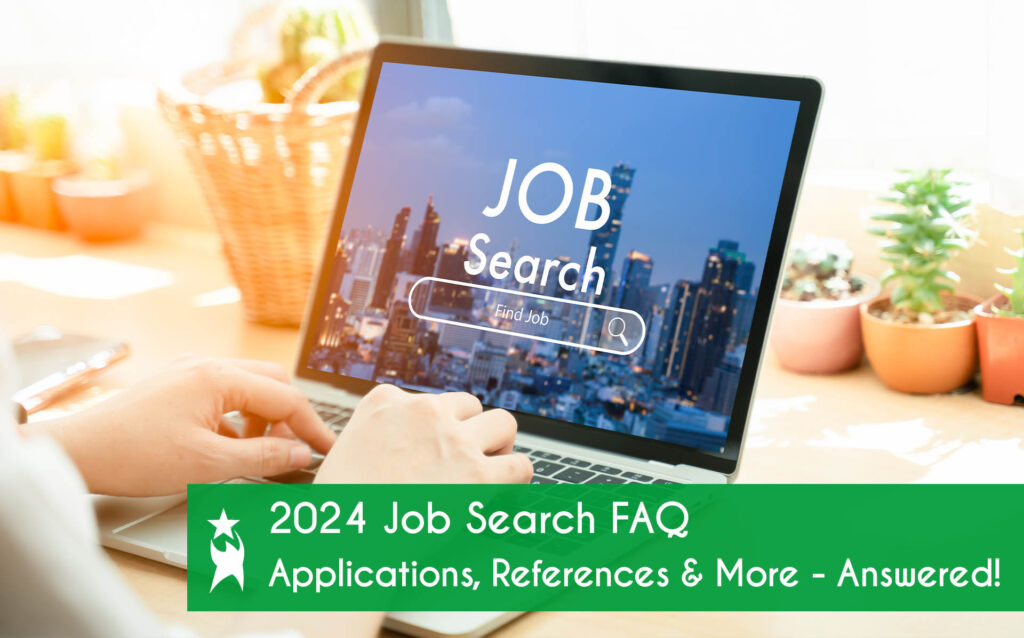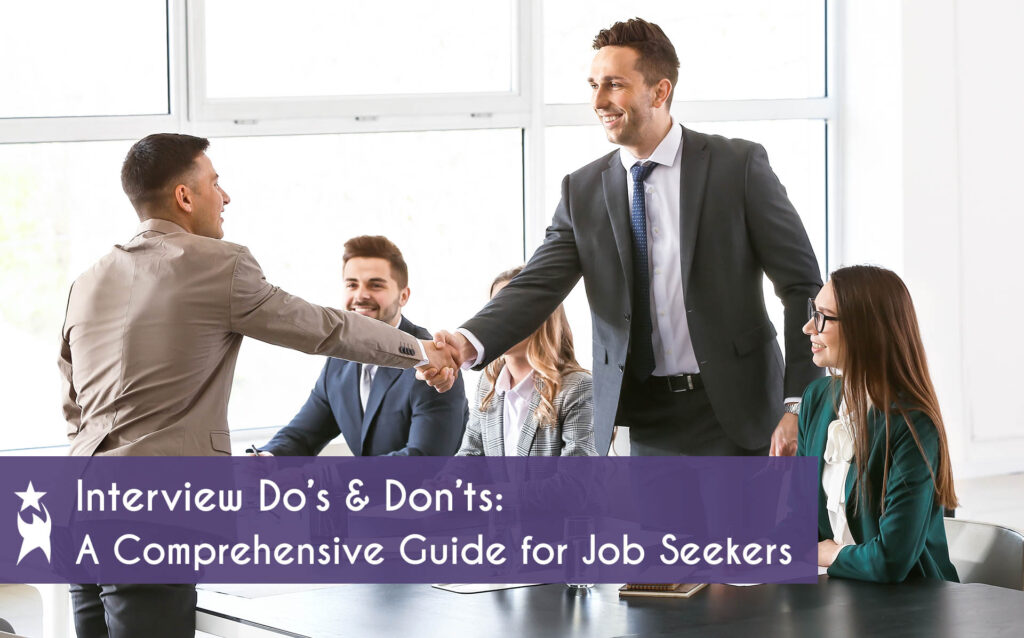October 10, 2023
Competition is fierce in today’s job market, and if you want to grab hiring managers’ attention, a well crafted resume is the best place to start. Your resume serves as your initial introduction, and it’s your first opportunity to showcase your skills, experience, and qualifications. So, if you want to land that interview, you’ll need a polished resume that stands out from the crowd. Fortunately, I’ve pulled together all the info you’ll need to make it happen. Let’s get started!
Resume Contact Info Dos and Don’ts
First, add your contact info. It should go at the very top of your resume to make it easy for hiring managers to contact you. Place it right below your name, and double check that everything is current and correct. Accurate contact info is obviously essential, but it’s also important to strike a balance between accessibility and privacy.
Include these essentials
Include the details hiring managers will need to get in touch with you:
- Your first and last name
- Professional email address (like smith@email.com)
- Reliable phone number
If it makes sense for your career, you can also add your LinkedIn profile or personal website.

Remove these to protect your privacy & security
Remove any contact info that could create privacy concerns. For example, the following contact details aren’t necessary for hiring managers to contact you, but could be used to steal your identity. Therefore, these should not be listed on your resume:
- Your home address
- Social security number
- Date of birth
Write a Compelling Resume Summary
After your contact info, include an attention grabbing summary or objective statement. This short section should be snapshot of your skills and career aspirations. It’s also a brief pitch to grab employers’ attention, so tailor this section to match role you apply for. Your summary should be a quick and compelling statement highlighting your qualifications and career goals. However, it’s important to keep it short, typically just 2-3 sentences or bullet points, so avoid long paragraphs or excessive details. Follow these steps to create one:
Start with a Strong Opening
Begin your summary with a strong opening statement highlighting your career level, expertise, and key strengths. Your resume isn’t the place to be shy about your accomplishments, so use it to boast about your skills and qualifications. For example, if you’re an experienced Project Manager, you could start with, “Seasoned Project Manager with a proven track record of…”

Highlight Achievements
Use your resume summary to highlight the number of years of experience you have in your field and provide a concise overview of your most relevant work history. This section is your opportunity to showcase your most relevant accomplishments and achievements, and spotlight any noteworthy projects and results. In particular, you’ll want to include any qualifications that demonstrate your ability to succeed in the role you’re applying for. This may be different for each role you apply for, so adapt it for each one before sending it over. Whenever you can, incorporate quantifiable metrics (e.g., ‘boosted sales revenue by 20%’) to maximize your impact.
Express Your Career Goals
Career goals belong in your resume summary too, but list them in a concise way, and make sure to explain how your goals align with the job you’re applying for. Not only does this help employers understand your motivations, it also provides them with a clear picture of your long-term aspirations.
Tailor Your Resume Summary to the Job
Make it a habit to tailor your resume summary for each job you apply for. The extra effort can go a long way. With this in mind, you can optimize this section by emphasizing the skills you have that align with those mentioned in the job post. With this in mind, edit your summary to use the exact keywords the company used in the job post. Additionally, you can go ahead and mention the company by name in your summary—it shows you’ve done your homework and you’re genuinely interested in the role.

Examples:
“Experienced Quality Assurance Manager known for implementing effective quality control processes, reducing defects, and optimizing operations. Skilled in team leadership, audits, and compliance. Seeking a role to deliver superior quality assurance solutions at [Company Name].”
“Results-driven Sales Professional with a proven track record of exceeding sales targets and driving revenue growth. Expert in building and nurturing client relationships, identifying market opportunities, and closing deals. Seeking a dynamic sales role at [Company Name] to leverage my strong negotiation and communication skills for mutual success.”
Resume Skills & Experience
While it’s crucial to provide comprehensive information, you should still aim to keep your resume concise. Keep your resume to one page if you have less than ten years of experience and two pages if you have more extensive experience. Rather than just listing job duties under each job you’ve held, focus on your achievements and accomplishments for each role.

Choose your details wisely
Pick and choose key details that match your target job to help hiring managers recognize your value. Include both hard skills (e.g., software proficiency, technical skills) and soft skills (e.g., communication, teamwork, problem-solving) essential to the job you’re applying for. And, if your recent experience is from a different field, look for ways to highlight any transferable skills that match the job.
Quantify your achievements
Whenever possible, quantify your achievements with specific numbers or results. For example, if you increased sales, specify the percentage or dollar amount of the increase. Quantifiable achievements make a stronger impact and help hiring managers understand how you can benefit the company.

How to List Education on Your Resume
The education section of your resume reinforces your qualifications, so accuracy is key for credibility. Follow these guidelines to list your education effectively:
What to include
If you have a college degree, list it on your resume. On the other hand, if you don’t have any college or higher education to highlight, you can list your relevant high school or GED info. (You don’t need to include high school information on your resume if you have a higher degree).
If you’re currently pursuing coursework or certifications, you can add them in a “Professional Development” or “Certifications” section alongside your formal education if it’s relevant to the job. It’s also a good idea to highlight any relevant certifications or additional training that set you apart from other candidates.
How to organize education on your resume
How you present your education on your resume depends on how your career goals and experience align with the specific job you’re applying for. Tailor it for each job to emphasize the education most relevant to the position, and keep the details brief and to the point. Here’s what to include for each degree or certification:
- Name of the institution you obtained your degree or certification
- Type of degree (e.g., Bachelor of Science)
- Major or field of study
- Graduation date (or anticipated graduation date)

If you have multiple degrees or certifications, list the most relevant or highest level of education first. Only include details that are important to the job you’re applying for.
If you received any notable honors, awards, or certifications related to your education, you can consider including them if it’s relevant to the job. Additionally, it might be helpful to include relevant coursework, especially if you’ve recently graduated or are switching careers. However, be choosy and only mention courses that truly showcase your qualifications for the job. Likewise, if you achieved a high GPA, or participated in relevant extracurricular activities, you can highlight them. However, if you graduated a long time ago and have significant work experience, you should omit these details to focus on your relevant work experience.
Where to place it
Typically, your education section should go after your work experience, especially if you have substantial work experience. However, if you’re a recent graduate or switching industries and your education is highly relevant to the job you’re applying for, you can position it before your work experience. As you gain more work experience, though, your education becomes less important on your resume. When you have a longer work history, you can shorten your education section to make room for your professional accomplishments.
Watch Your Language
The language and tone you use throughout your resume is important. Most employers use applicant tracking systems (ATS) to screen resumes. That means using the wrong language could cause your resume to be screened out, even if you’re a great fit for the job. Integrate keywords from the job description into your resume to boost your chances of getting past the ATS.
Use professional language and avoid using personal pronouns like “I” or “me.” Instead, make your resume shine by using powerful, active verbs that show confidence and professionalism, and make your achievements pop. Not only will this help you get past the ATS, it also leaves a positive impression on hiring managers. To put this strategy into action, use verbs like “managed,” “achieved,” “implemented,” and “executed” throughout your resume to describe your responsibilities and achievements.
Select a Professional Layout for your Resume
Layout is an important choice for an effective resume. Choose a clean layout, and use a standard and consistent font throughout for a resume that looks polished and professional. It’s also a good idea to use bullet points instead of long paragraphs to organize your info in a clean and easy to read format.

Choose a Resume format
There are a few common resume formats to choose from, including:
Chronological: Lists your work experience in reverse order, showcasing your recent jobs first. It emphasizes your career progression and highlights your most relevant work experience. This format is best for those with a consistent work history in the same field.
Functional: Focuses on your skills and qualifications rather than your work history. It highlights your abilities, achievements, and qualifications at the beginning of the resume. This format is often used by job seekers with employment gaps or those changing careers to draw attention to their relevant skills and downplay chronological job history.
Hybrid or Combination: Blends elements of both chronological and functional formats. It showcases your skills and qualifications upfront, followed by a concise work history section. This format is flexible and ideal for job seekers looking to emphasize both their relevant skills and their work experience.
Your choice should align with your career goals and industry expectations. For example, creative fields may appreciate more visually appealing, design-focused layouts, while traditional industries usually prefer clean, professional formats.
Keep it legible
Regardless of your layout choice, you should prioritize readability. Select a standard, professional font and use it throughout the entire document. Your resume isn’t the place to experiment with uncommon or fancy fonts. Remember, if the ATS or hiring manager can’t read your creative font choice, then your resume probably won’t land you an interview. Make sure to use appropriate font sizes and maintain consistent formatting throughout to make it easy to read.
Organize it
Arrange your resume into distinct sections like Contact Info, Summary, Skills, Work Experience, and Education. Structure them logically and use clear headers to keep your resume organized. Likewise, keep it concise and to the point to emphasize details relevant to the job.
When you save your resume, consider using a PDF format. PDFs not only ensure a consistent layout and compatibility across various devices, but also provide a secure and polished appearance. On the other hand, Word (DOC/DOCX) files are editable, but they can also pose compatibility issues. If you’re working with a recruiter, it’s a good idea to keep an editable Word version for collaboration, and then switch to a PDF version when you’re ready to send it over to employers. This way you can strike a balance between convenience and a professional presentation.

Edit & Review Your Resume
Don’t forget to edit and review your resume before sending it out! Remove details that aren’t important to the job you’re applying for, and adjust the layout to match each job. This way, you can effectively highlight the qualifications and experience that matter most for each job. Don’t hesitate to ask for feedback from someone you trust to help.
Choose someone to review your resume
Selecting the right person to review your resume is important because their insights can shape the quality of your application materials. Think about their expertise, industry knowledge, and professionalism. Ideally, they should be familiar with the roles you’re applying for, and the qualifications that matter. Look for someone who can give you constructive feedback with respect, whether it’s a colleague, mentor, ex-boss, or a recruiter.
The person you choose to review your resume should be able to keep things confidential and give you objective feedback. Look for someone with hiring experience and a good eye for details, who isn’t afraid to give you honest feedback. Ultimately, the goal is to improve your resume to make it an effective tool for your job search.

Proofread your resume
Errors or typos on your resume create an instant negative impression for most hiring managers. Attention to detail is crucial in today’s competitive job market, so proofread your resume carefully. If possible, have someone else proofread it for you. However, don’t be tempted to rely on spellcheck alone. It won’t catch any typos that are real words.
Tailor Your Resume for Each Job Application
Go the extra mile and take the time to customize your resume for each job. It shows hiring managers that you’re genuinely interested in the job you applied for, and demonstrates that you have the skills and qualifications they’re looking for. Here’s how to customize your resume effectively to increase your chances of landing an interview:
Create a master resume
Before tailoring your resume for a specific job, it’s good practice to have a master resume that includes all your work experience, skills, achievements, and education. This gives you a solid foundation to start from. Then, save it as a new document for each application, and you can select and edit relevant content for each application without destroying your master copy.
Do the research
Start by reviewing the job post with close attention to the key requirements, responsibilities, and qualifications listed in the ad. In particular, look for keywords and phrases that are repeated throughout the ad, or otherwise emphasized. These key terms are likely the most important to the employer, so if they match your skills and experience you should incorporate them into your tailored resume.

Match your qualifications to the job ad
Next, compare your master resume to the job ad, and identify your qualifications, skills and experiences that directly align with the key skills in the job ad. In short, these should become the focal points of your tailored resume. Reword the skills and experience on your resume to match the language in the job ad if necessary.
Finally, go ahead and rearrange the content on your resume to prioritize the most relevant information. Place the qualifications, experiences, and skills that match the job ad near the top of each section, especially in the summary and skills sections.
Edit your keywords
If the job posting uses a specific job title or terminology, edit your resume to use those same keywords to ensure the company’s ATS will recognize your experience is a good match to the job. It’ll also help hiring managers understand how your experience aligns with the job. Don’t forget to edit your resume summary to use the same keywords and express your interest in the role. Be sure to explain how your skills and experiences make you an ideal candidate. If possible, go ahead and mention the company by name in your summary.
Remove Irrelevant Information
Omit any details that aren’t relevant to the job you’re applying for. For example, if you have past work experience in unrelated fields, you can choose to exclude them or provide only minimal information. If you choose to add them, zero in on the transferable skills that demonstrate you’re a great fit for the job or that you’d fit right in with the company culture. Likewise, go ahead and remove or downplay irrelevant skills that don’t match the job you’re applying for.

Proofread Your Resume Again
After tailoring your resume, thoroughly, proofread it again for errors, typos, and consistency. Ensure that it accurately represents your qualifications and aligns with the job description.
It’s good practice to save different versions of your resume tailored to each specific role to ensure your resume remains highly relevant to each job application.
In today’s job market, a finely-tuned resume can make a huge difference in landing your dream job. Therefore, you can up your odds of standing out to potential employers by customizing your resume to showcase the accomplishments they care about most. Keep in mind, your resume is a dynamic, living document that should grow with your career and adapt to match the specific jobs you’re going after. Best of luck in your job hunt!
Got questions about your career? We’re always happy to answer questions from our readers, so send them our way!
Check out our other blog posts for more useful tips!








